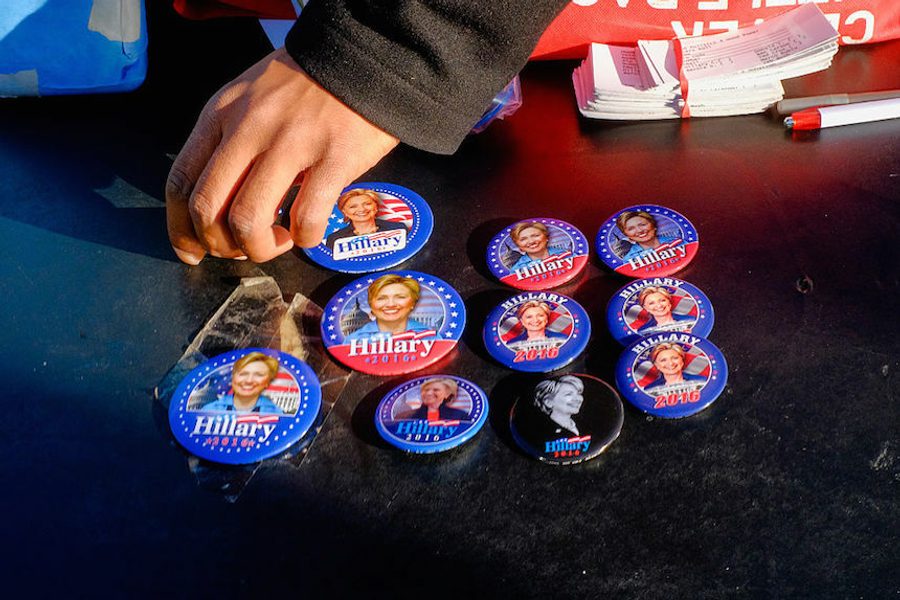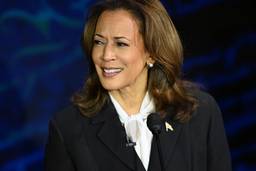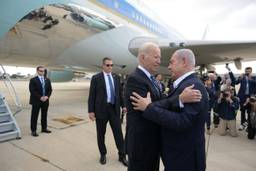A Newly Leaked Hillary Clinton Memo Shows How Campaigns Get Around Super PAC Rules
It’s not that hard.
Branko Marcetic

Spare a thought for those aspiring to be president. The existence of Super PACs, brought to life by the 2010 Citizens United Supreme Court decision, offers the tantalizing prospect of being able to raise unlimited amounts of money to be spent on political advertising and other activities during an election. Yet the law forbids any direct coordination between campaigns and said Super PACs, which includes expressly instructing donors to funnel large amounts of their hard-earned money to these entities. The situation must be agonizing.
A recently released internal Clinton campaign memo suggests this needn’t necessarily be the case, however. The document, leaked on Saturday by someone known as “Guccifer 2.0”, who claimed responsibility for the hacking of the DNC network last week, shows not only the careful way in which campaign staff must stay within the rules governing campaign coordination with Super PACs, but also suggests how campaigns can subtly get around these rules.
The memo, sent to Clinton’s top campaign staff in March last year by Marc E. Elias, Clinton’s general counsel and a partner at law firm Perkins Coie, outlines instructions for how campaign staff can solicit donations for and talk to donors about the campaign’s preferred Super PACs without running afoul of the FEC. Read another way, however, the memo also serves as a kind of guide for how staff members can provide veiled hints to donors for which Super PACs to direct their “soft money” — or unlimited contributions — to.
The memo opens by strictly informing staff they can only speak to donors about the campaign’s support for a particular Super PAC by coupling it with a request for “hard money” — or a specific, limited amount — that falls within the acceptable dollar limit. This way, the staff member’s reference to a Super PAC the campaign is aligned with could not be construed as a specific direction to the donor to help Clinton’s campaign by giving unlimited amounts of money to that same Super PAC.
In theory, this makes sense. In practice, however, the carefully worded statements staff are suggested by the memo to use come off as subtle winks and nudges to donors meant to be reading between the lines.
The memo first instructs staff to always make a “hard ask for $5,000” when speaking with a donor about Super PACs supported by the campaign, either before or after the conversation.
“Once the hard money solicitation is made, you can speak freely with the donor about the campaign’s support for that Super PAC’s work,” the memo explains.
The document then gives examples of some acceptable statements of support:
- “The [Preferred Super PAC] is doing vital work. You should support them.”
- “We cannot win this election without [Preferred Super PAC]. You should support them.”
- “The most important thing you can do right now is support [Preferred Super PAC].”
If staff forget to ask for $5,000 at any point during such a conversation, they are instructed to call the donor back immediately and do so.
Of course, what “support them” actually means in this context is left up to the donor’s imagination. Perhaps it might mean simply giving the Super PAC — an entity whose sole purpose is to serve as a conduit for a limitless infusion of huge amounts of cash — another donation of $5,000 in the future. Or perhaps it might mean giving that Super PAC a vastly bigger dollar amount. Given that the average donation to Super PACs this election cycle has been around $25,460, it’s not hard to see how donors might get the idea it’s the latter.
The precisely worded lines of dialogue provided by the memo, which fall just enough on the side of ambiguity, also help to create this impression. Take, for instance, the section which explains how campaign staff should respond to donors asking where they should donate their money.
The memo outlines a scenario in which a donor asks for specific instructions on how they should go about spending $1 million they have set aside for the election. The memo informs staff that they can feel free to directly instruct donors, both on specific amounts they should be giving and to whom, when it comes to entities like the DNC.
“I want the first $5,400 to go to the campaign. The next $33,400 should go the DNC’s main account. The next $70,000 should go to the following seven state party federal accounts (then list them),” reads the hypothetical, permissible response.
When it comes to Super PACs, however, the memo tells staff to subtly tweak their language.
“Finally, you should support [Preferred Super PAC A] and [Preferred Super PAC B].
We cannot win without them,” goes the response . “The law allows us to ask our supporters for $5,000 each for [Preferred Super PAC A and B]. That is what we are doing.”
It’s hard not to view this carefully worded statement — and its suddenly robotic change in tone — as an artful cue directing donors to give money to a Super PAC. As the staff are instructed to explain, the law forbids them from asking for any more than $5,000 — but donors with even a passing familiarity with Super PACs know they can give a lot more.
This reality is somewhat acknowledged in the passage that follows. The memo explains that if the staff member were to simply say “Please donate to [Preferred Super PAC],” and do so “without specifying that you are asking for only $5,000 for that Super PAC,” this would be “impermissible ‘direction’ of soft money.”
In other words, requesting donor support for a specific Super PAC and asking for a nonspecific donation to it is “impermissible direction of soft money.” Requesting donor support for a specific Super PAC, and specifically telling the donor that the campaign can’t legally ask for any more than $5,000, is not the least bit suspect.
The document goes on to outline several more scenarios in which campaign staff might find themselves in when talking to donors, and lists acceptable responses.
For example, staff are allowed to tell donors that the campaign is or isn’t supporting particular Super PACs, but, as the memo makes clear, if staff tell donors which Super PACs the campaign supports, they must follow it up with a request for a $5,000 donation.
Staff are also advised on how to ask donors to raise much more than the $5,000 limit — namely, by asking donors to solicit $5,000 each from multiple individuals.
“I am asking you to raise $100,000 for Super PAC from 20 individuals, with $5,000 from each individual,” goes one of the permissible requests.
And while campaign staff are able to give out the contact information of Super PAC representatives, the memo stresses that they have to do so carefully, ensuring they don’t explicitly tell donors to call or meet with them. This means staff can tell donors:
“You can call _____________ at ______ from [Super PAC] to find out more information,”
but are not allowed to say:
“___________ from [Super PAC] wants to meet with you. Can you please sit down with her?”
In effect, such cautiously worded bits of dialogue serve as a way to signal to donors which Super PACs they should be donating large amounts of money to, skirting the rules around directly soliciting funds for Super PACs. While explicitly instructing donors to funnel money to such PACs would be illegal, implying it with phrases like “We cannot win this election without [Preferred Super PAC]. You should support them,” is not.
Memos like this were likely sent to staff at every now-defunct campaign in this election cycle. Clinton’s isn’t the only campaign that has looked for ways to push the rules forbidding direct coordination with Super PACs to their limit. Back in December, with hilarious results, Ted Cruz’s campaign dumped on YouTube 15 hours of unedited, Lynchian footage of himself interacting with his family in strangely unsettling, stage-managed scenes set inside his home, footage that was originally meant to be accessed by his Super PACs and used to create pro-Cruz ads.
What the memo does illustrate is how the vague definition of campaign coordination with Super PACs can be further blurred, allowing campaigns to circumvent the already-meager restrictions on such activity. As UC Irvine Law Professor Richard Hasen has pointed out, “permissible coordination” under FEC rules can include a candidate using footage from a Super PAC ad in their own ads or sharing a lawyer with the Super PAC. Super PACs are even allowed to be run by a candidate’s family members, friends, ex-colleagues or former campaign manager.
The idea that Super PACs and candidates can’t co-ordinate is plainly laughable. As this Clinton campaign memo indicates, sending donors, checkbook in hand, in the direction of a particular Super PAC is simply a matter of saying the right words that toe the line between suggestion and factual statement.
The big loser, of course, is the democratic process, with candidates increasingly relying on these entities to raise unprecedented amounts of cash for their campaigns. So far this election cycle, Super PACs have spent over $340 million, less than half of the total they’ve raised. By the end of February this year, 41 percent of this total had come from just 50 donors and their relatives. Whether they were prodded into donating through expertly crafted statements or they did so of their own accord, the question is what these donors will want in return for their generosity.
Branko Marcetic is a staff writer at Jacobin magazine and a 2019-2020 Leonard C. Goodman Institute for Investigative Reporting fellow. He is the author of Yesterday’s Man: The Case Against Joe Biden.








